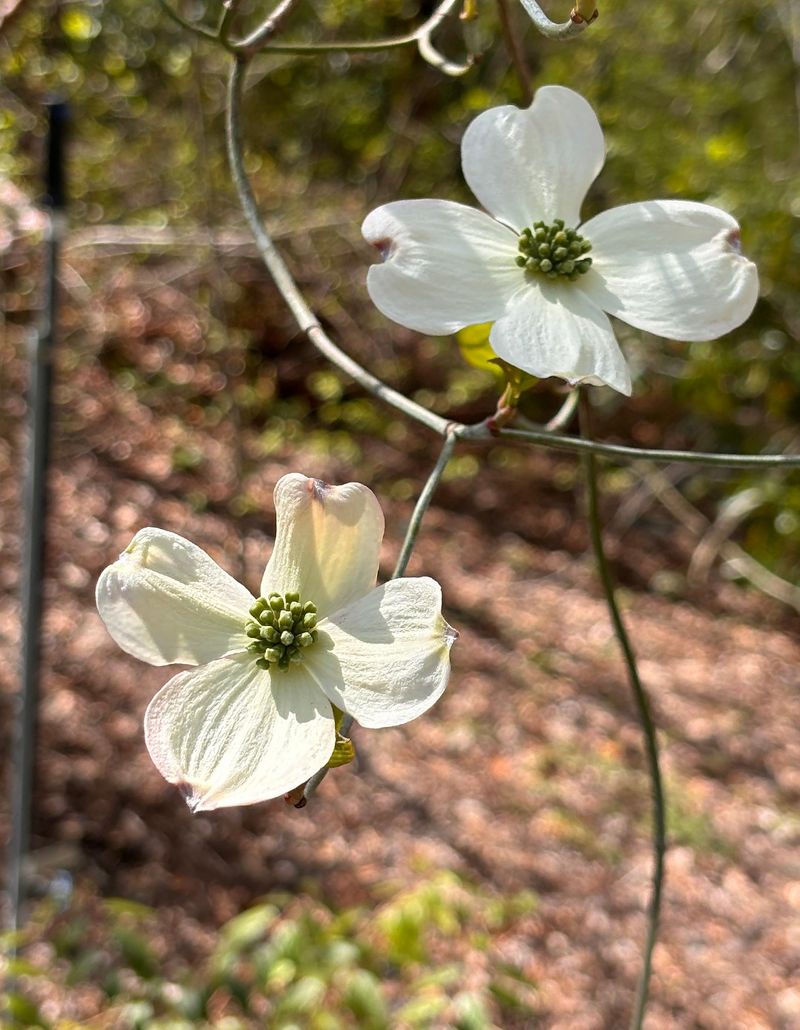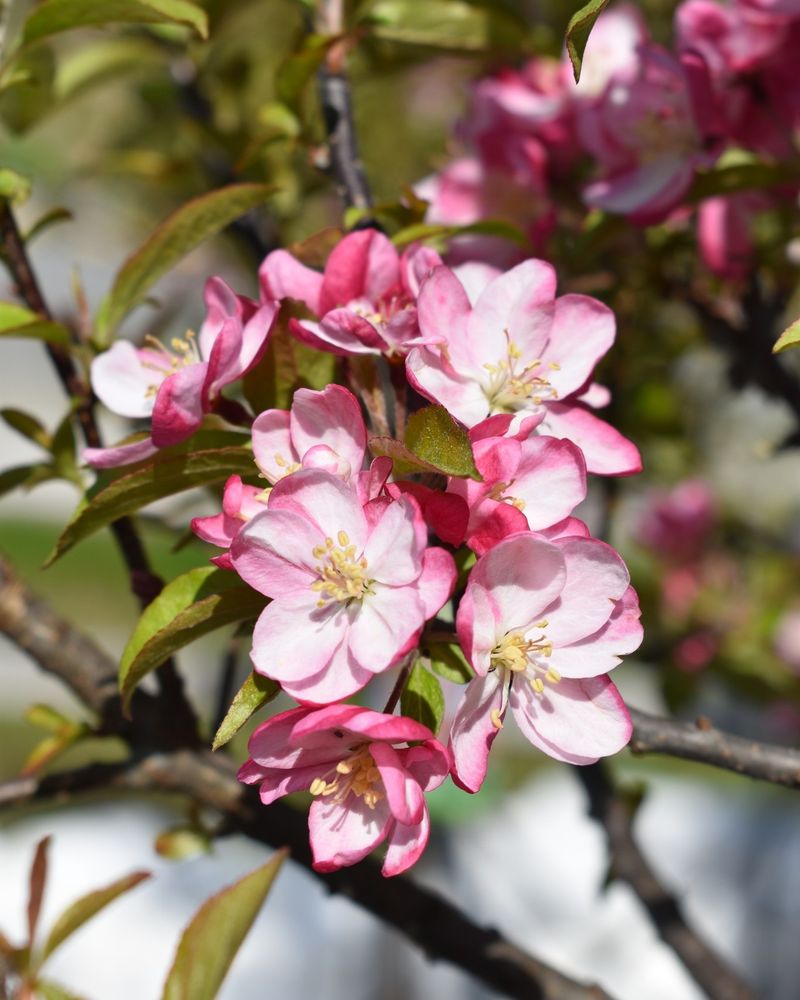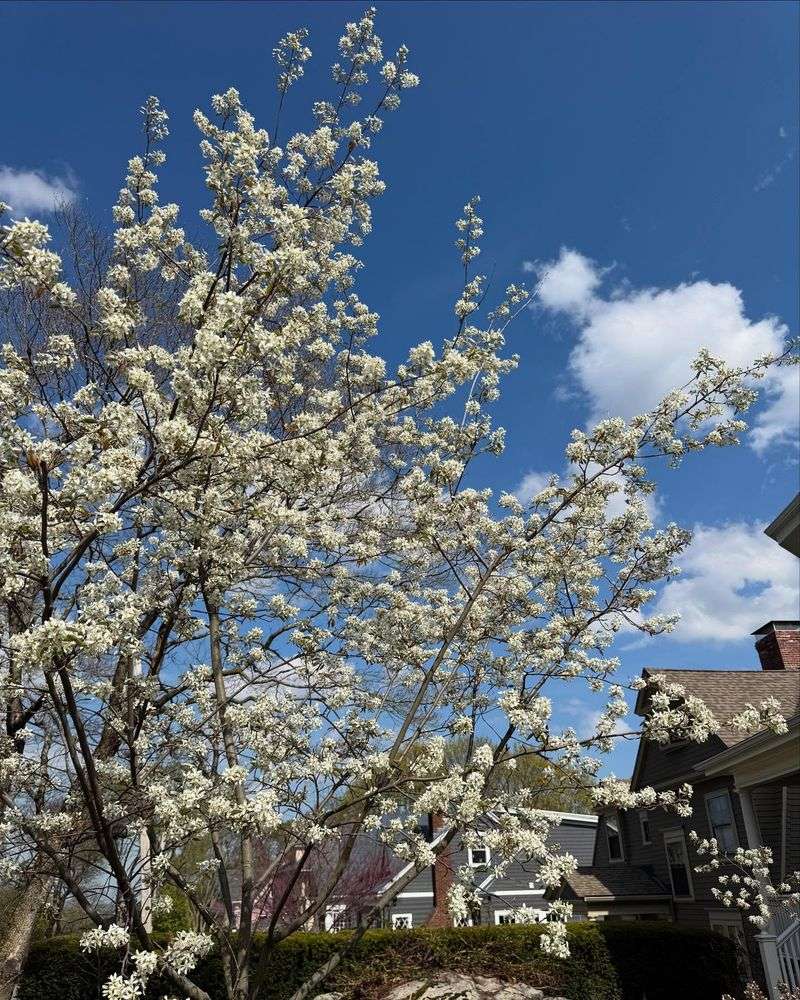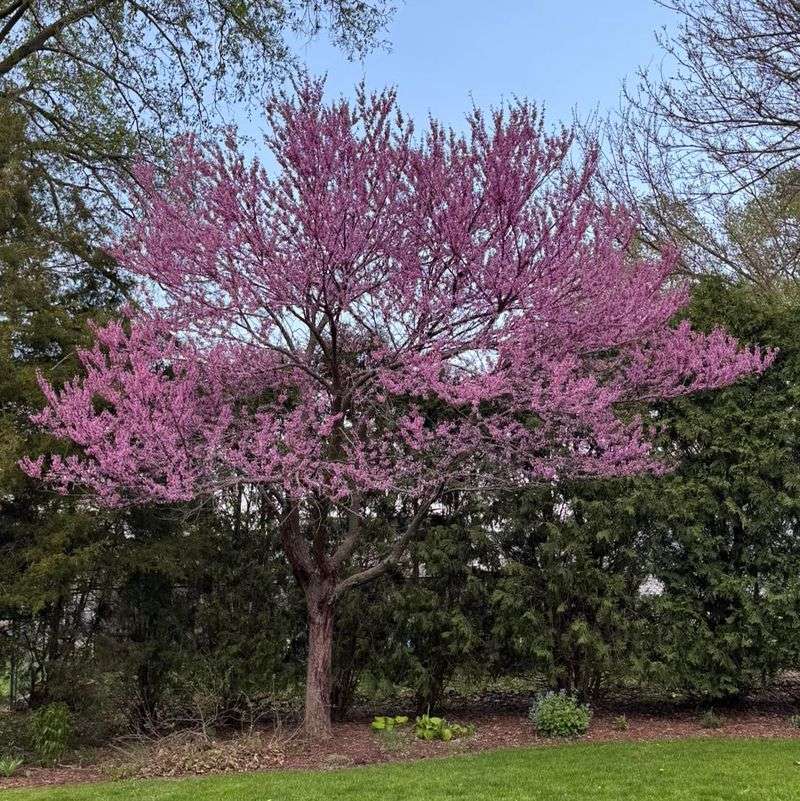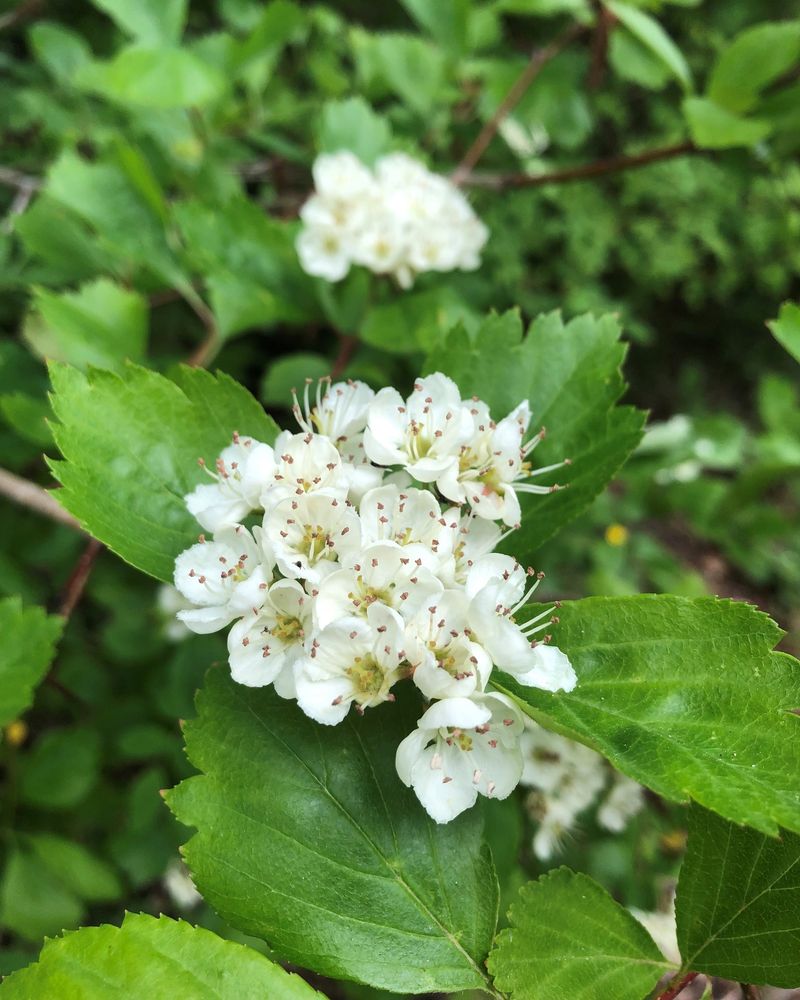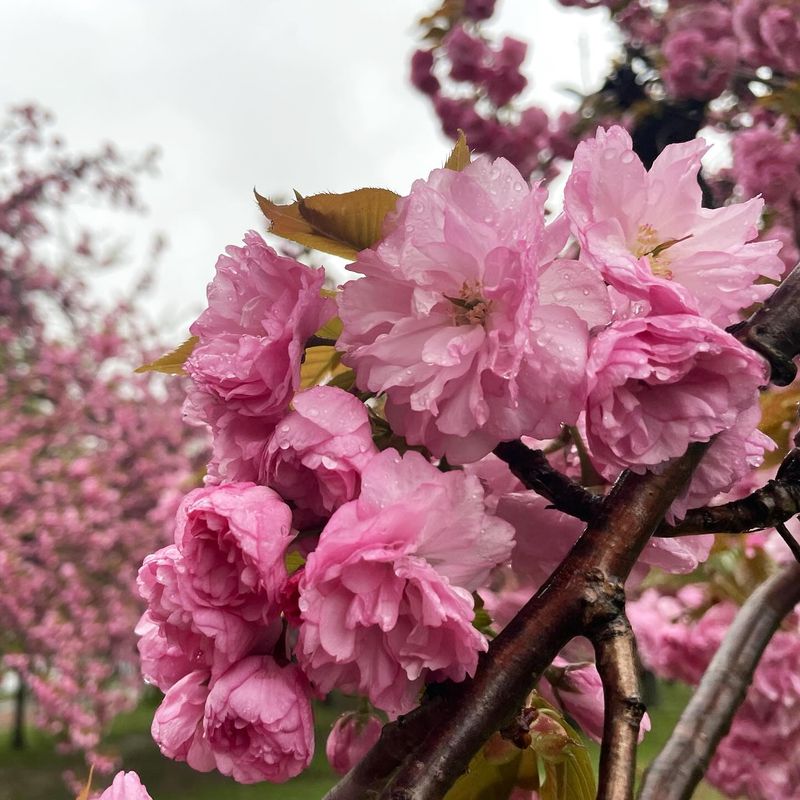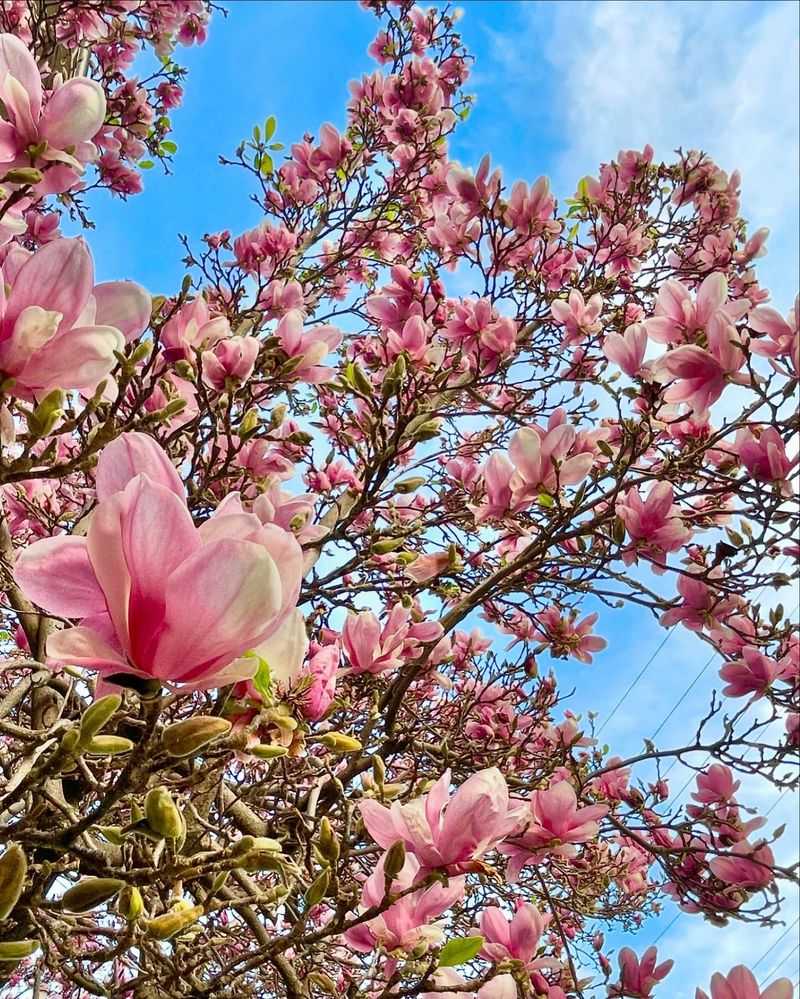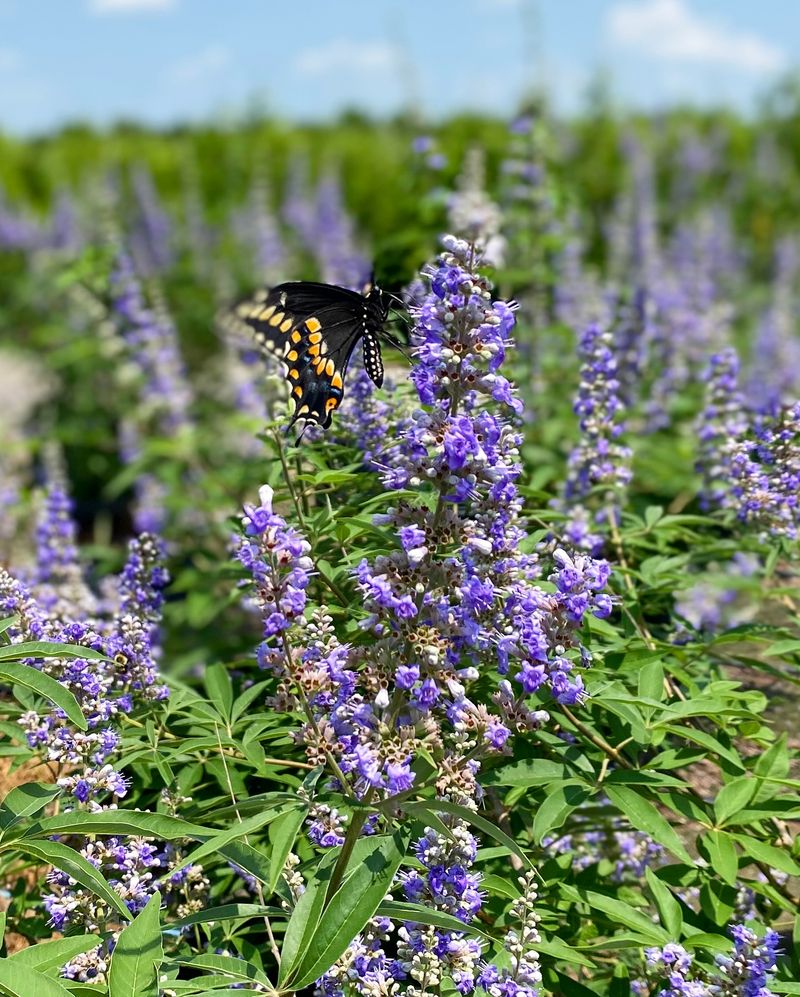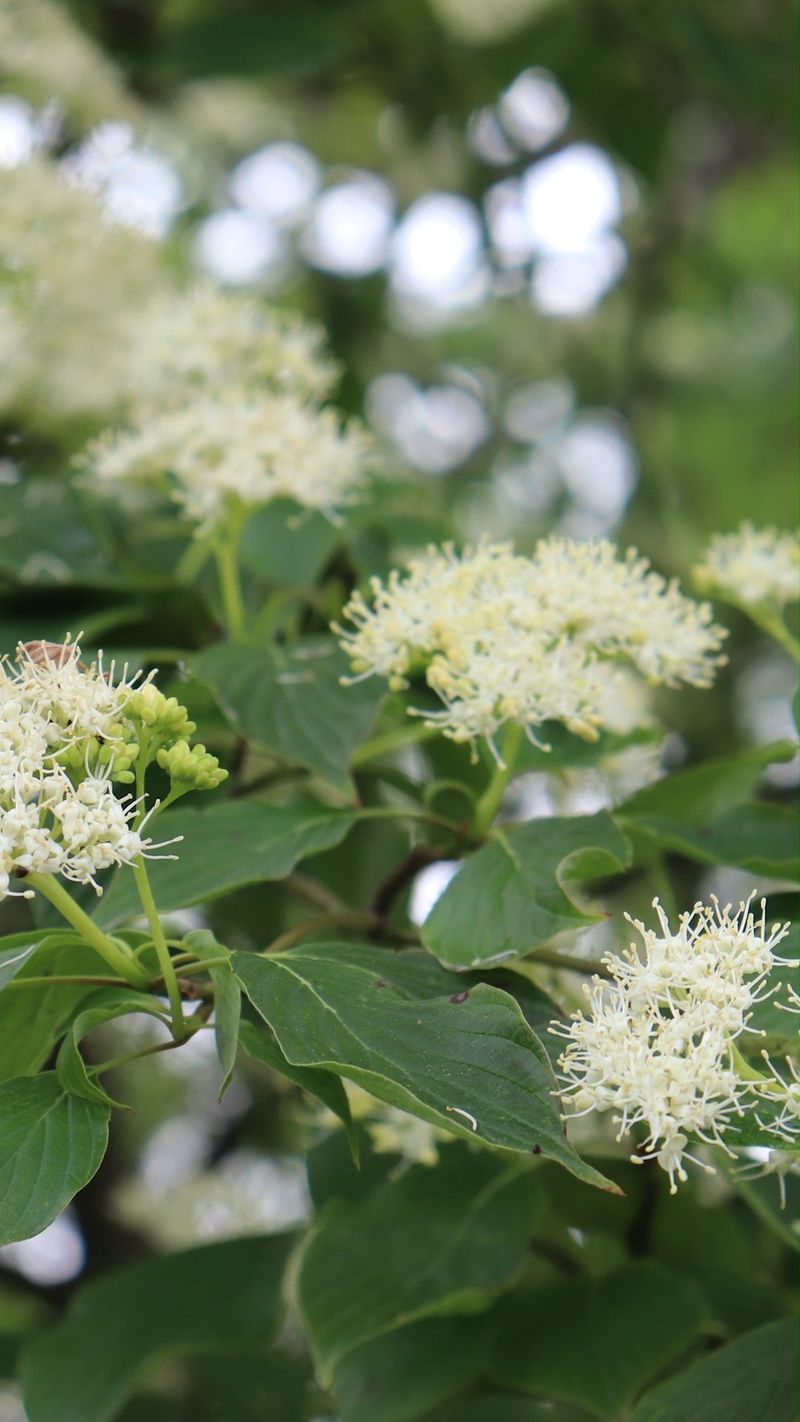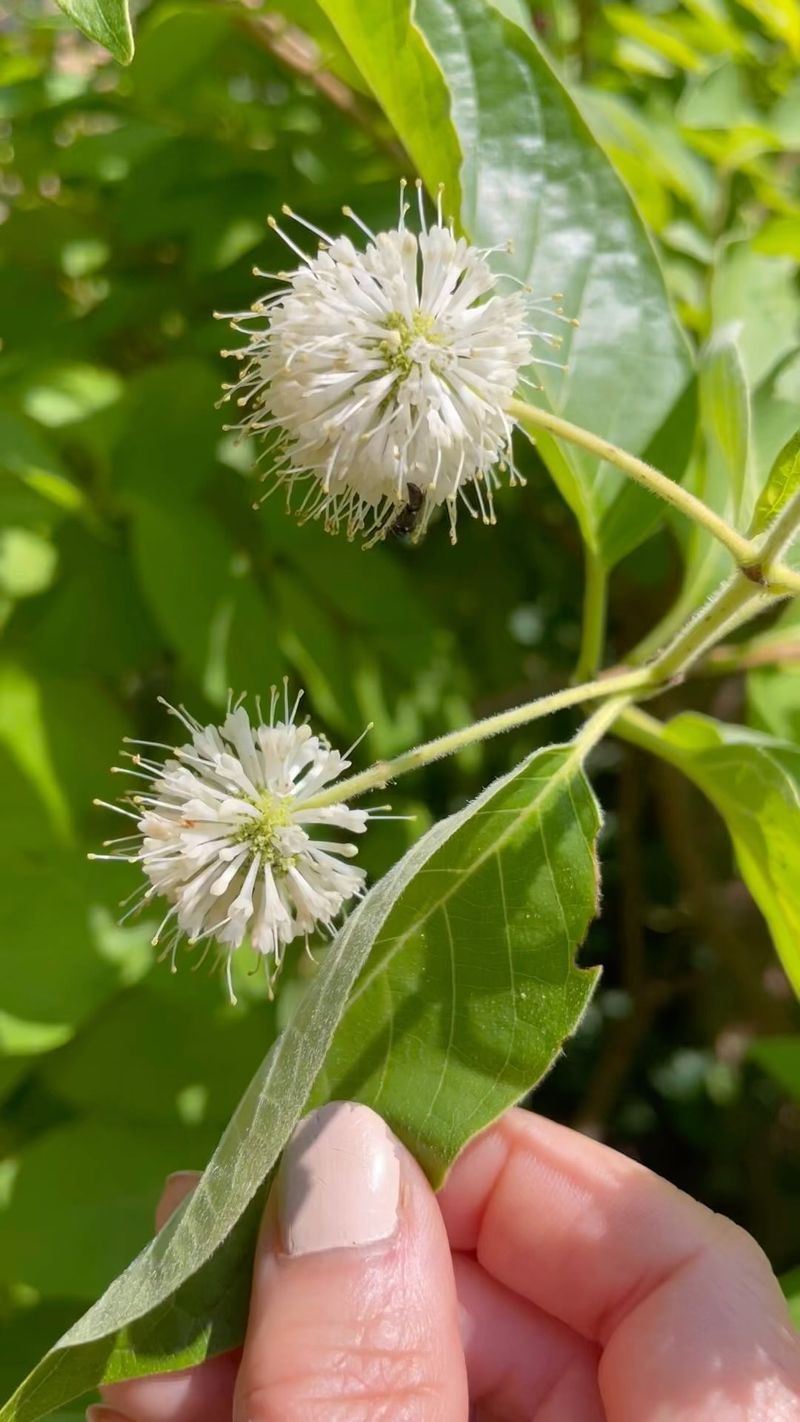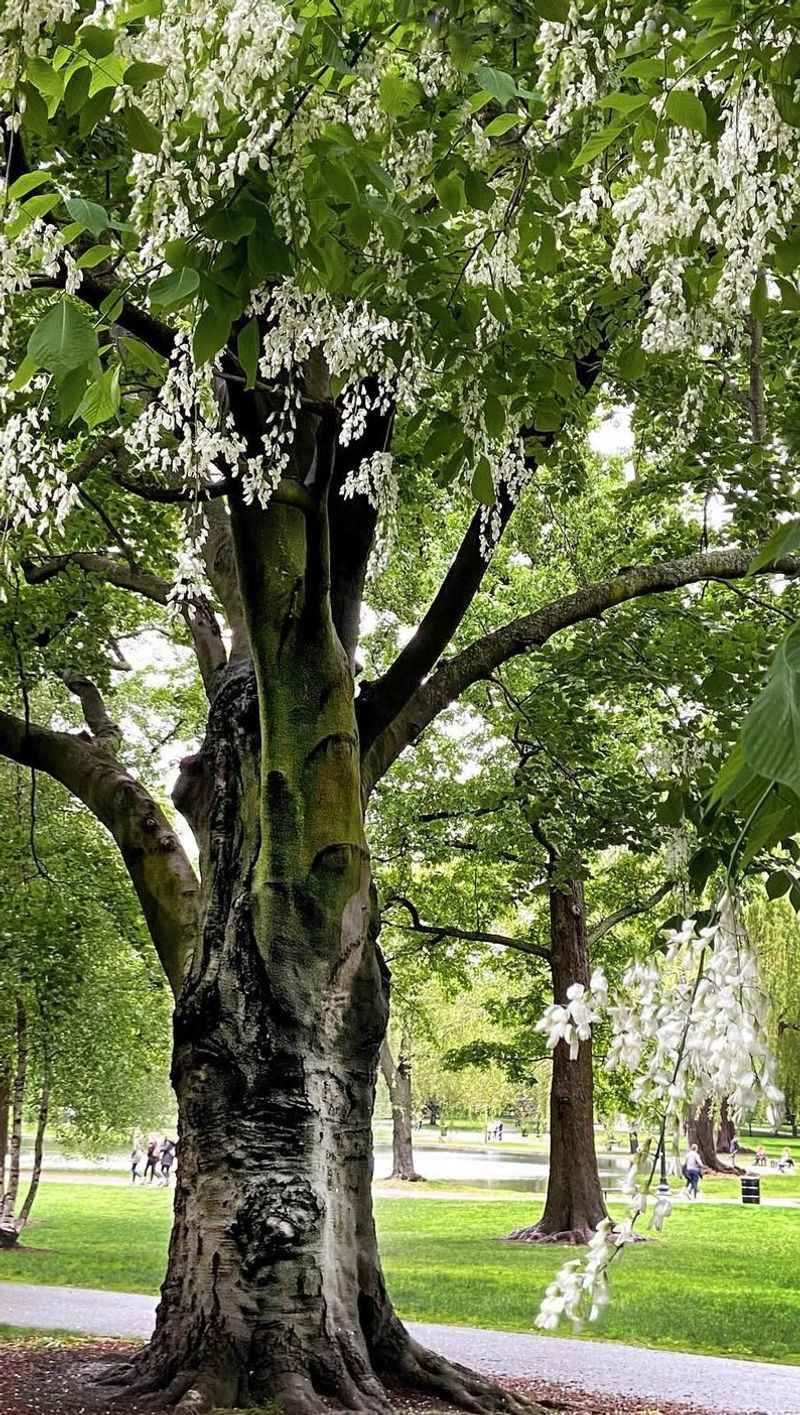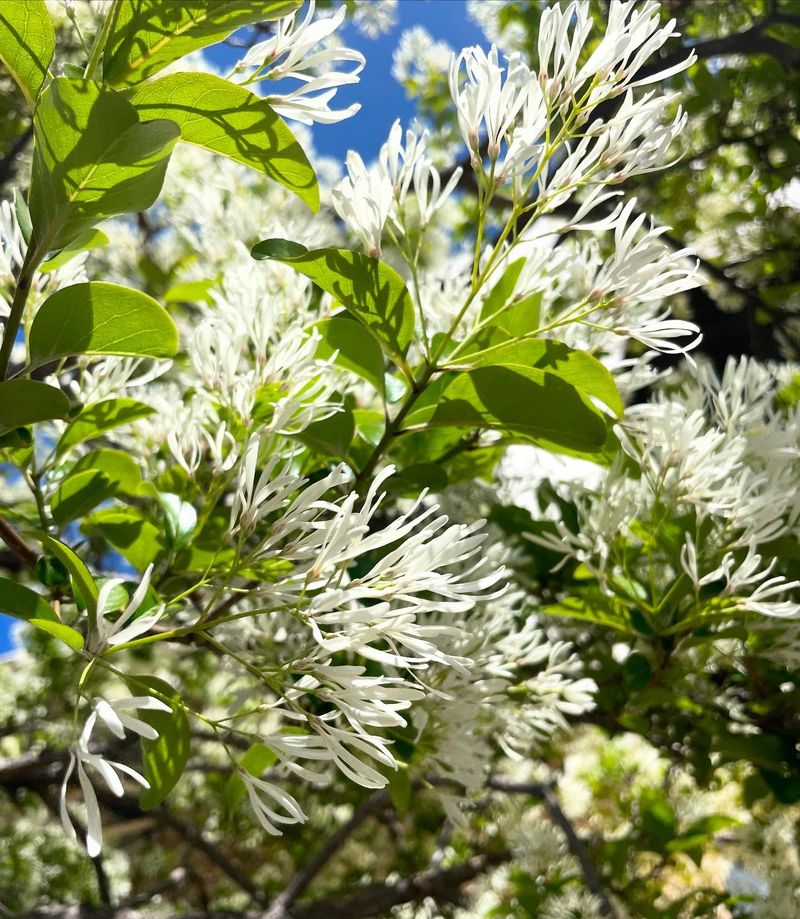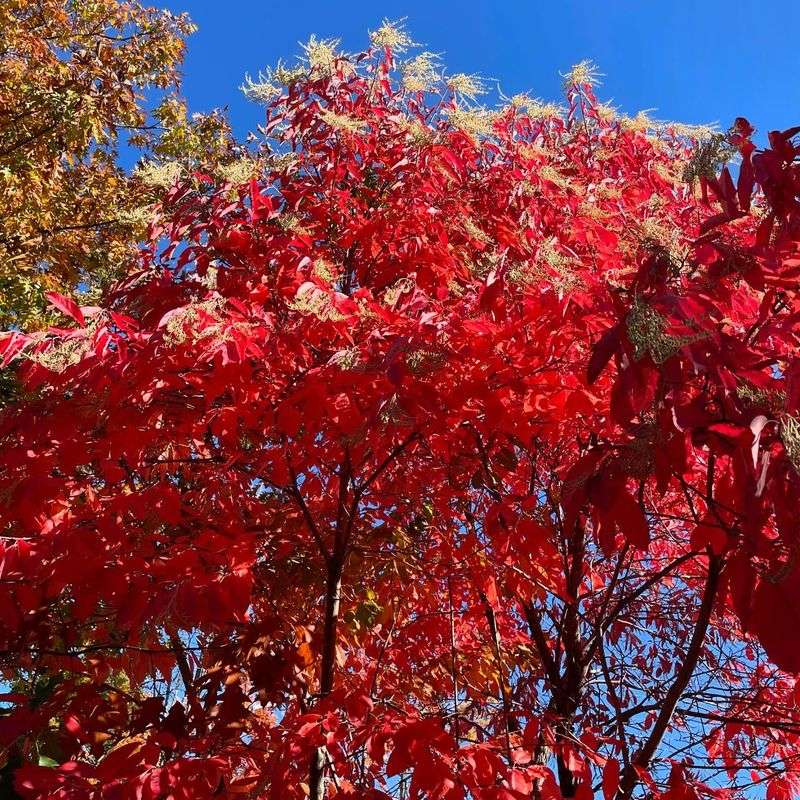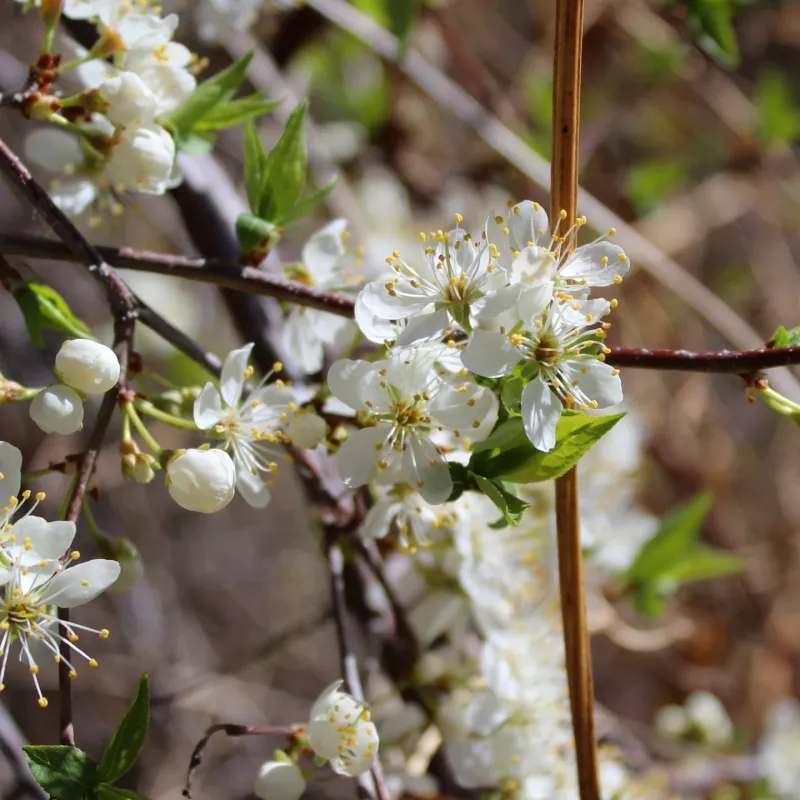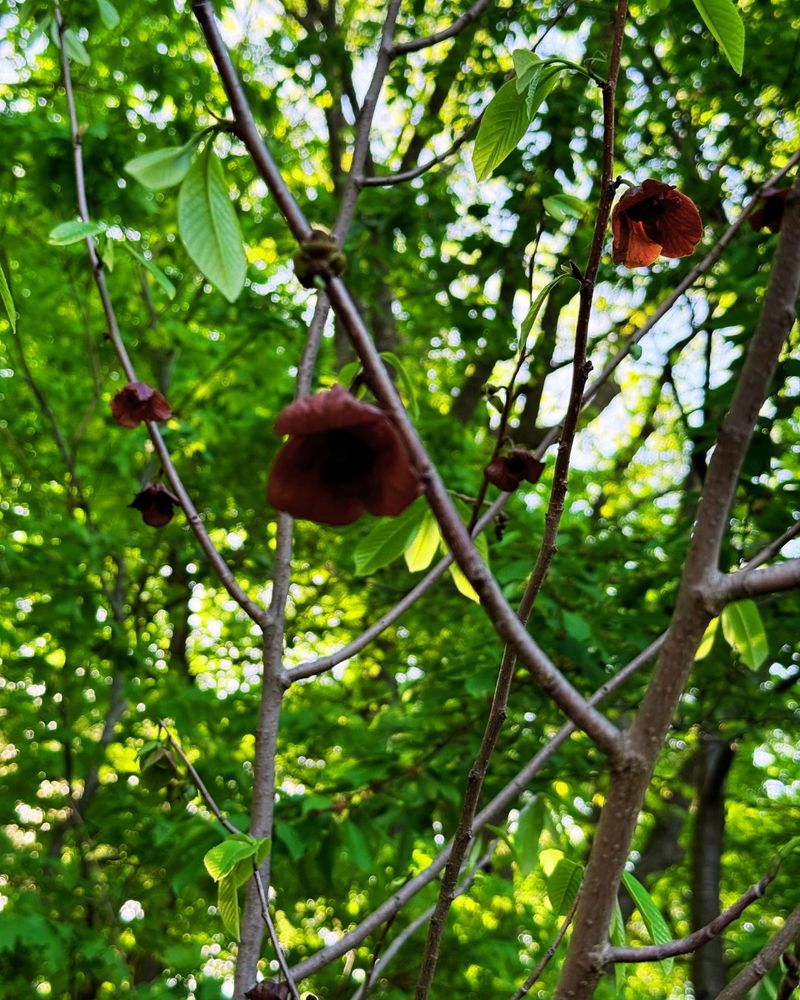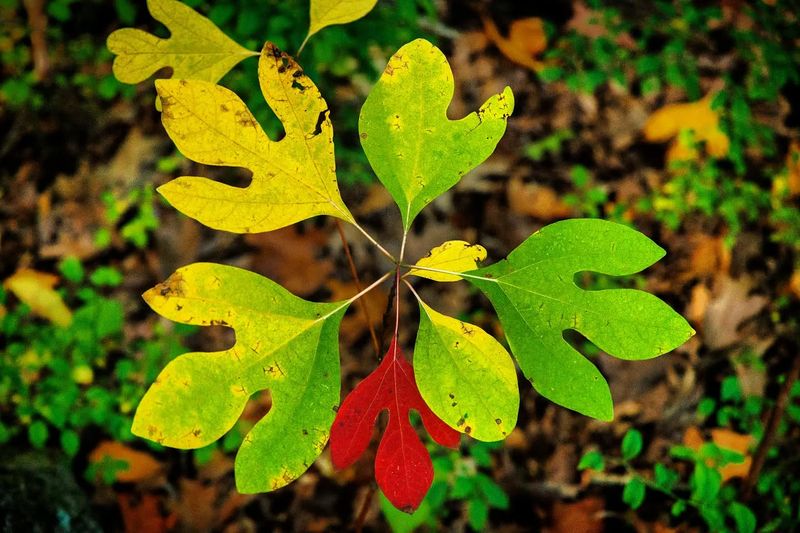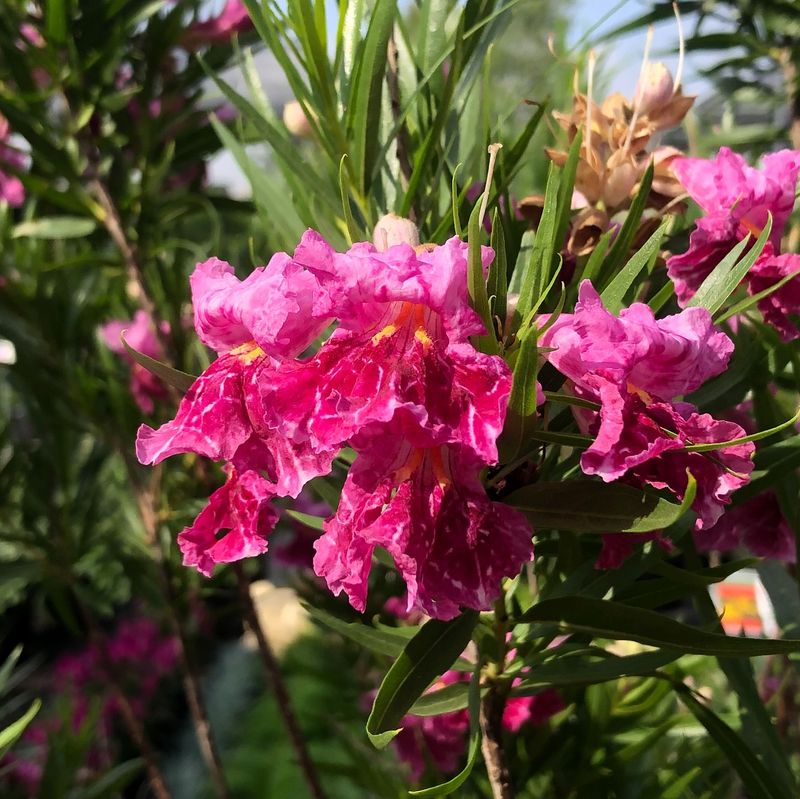There’s something magical about watching birds flit through the branches and butterflies dance around your trees. I’ve planted a few of these beauties myself, and it’s like hosting a little wildlife party right in the yard.
These trees aren’t just pretty—they’re magnets for all the right guests. If you’re hoping to make your garden more lively (and a lot more charming), this list is packed with favorites.
Get ready to meet some trees that’ll steal the show and win over the pollinators too.
1. Dogwood
Spring brings a spectacular show when dogwood’s iconic white or pink blossoms unfurl against blue skies. The flat, open flowers offer easy access to nectar for butterflies while providing perfect landing pads.
Later in summer, bright red berries appear, drawing hungry songbirds like cardinals and bluebirds. With its moderate size and four-season appeal, dogwood fits perfectly in most landscapes while supporting dozens of wildlife species.
2. Crabapple
Few spring sights rival a crabapple in full bloom, covered in delicate pink, white, or red flowers that attract early-season pollinators. Bees buzz enthusiastically among the fragrant blossoms, while butterflies drift from flower to flower.
Come fall, the small fruits hang like jewels, feeding cedar waxwings and robins through winter months. Disease-resistant varieties like ‘Prairifire’ and ‘Robinson’ offer carefree beauty while supporting dozens of bird species.
3. Serviceberry
Early white blossoms appear on serviceberry branches just when spring pollinators need them most. The delicate star-shaped flowers feed countless bees and butterflies emerging from winter dormancy.
Birds absolutely adore the sweet purple berries that follow in early summer – so much that they’re sometimes called “bird cherries.” Growing as either multi-stemmed shrubs or single-trunked trees, serviceberries provide nesting spots and food for over 40 bird species.
4. Redbud
Magical pink-purple flowers emerge directly from the branches of redbud trees in early spring, creating a breathtaking display. These unique blossoms appear before the heart-shaped leaves, offering crucial early-season nectar for hungry pollinators.
Small native bees particularly favor redbud flowers, while the tree’s seedpods attract songbirds later in the season. Growing just 20-30 feet tall with a naturally pleasing shape, redbuds make perfect understory trees for wildlife gardens.
5. Hawthorn
White flower clusters blanket hawthorn trees in spring, creating a pollinator paradise that hums with activity. The nectar-rich blossoms support numerous butterfly species while the dense, thorny branches provide safe nesting sites for birds.
Bright red berries persist through winter, feeding cedar waxwings, thrushes and grosbeaks during harsh months. Washington hawthorn and cockspur hawthorn varieties offer the best combination of beauty and wildlife value for home landscapes.
6. Cherry
Ornamental cherry trees burst into spectacular bloom each spring, creating clouds of pink or white flowers that butterflies simply can’t resist. Swallowtails and painted ladies flock to the nectar-rich blossoms while beneficial pollinators ensure a good fruit set.
Birds eagerly devour the small cherries that follow, especially on native varieties like black cherry. Even the tree’s exfoliating bark provides habitat for tiny insects that woodpeckers and nuthatches hunt among the branches year-round.
7. Magnolia
Magnificent goblet-shaped flowers open on magnolia branches, filling the air with sweet lemony fragrance that attracts pollinators from far and wide. Beetles actually pollinate many magnolia species – a relationship dating back millions of years.
Later, unusual cone-like seed structures open to reveal bright red seeds that cardinals and grosbeaks eagerly consume. Star magnolia and sweetbay magnolia stay small enough for accent planting while providing maximum wildlife benefits.
8. Vitex
Lavender-blue flower spikes cover vitex trees in summer, creating a butterfly magnet of extraordinary power. Monarchs, swallowtails, and skippers can’t resist the abundant nectar, often covering the blossoms in a fluttering display.
Hummingbirds dart among the spiky blooms while beneficial insects help control garden pests. Though not native to North America, vitex (also called chaste tree) fills an important niche by providing mid-summer nectar when many other trees have finished flowering.
9. Crape Myrtle
Summer heat brings out crape myrtle’s spectacular flower show – long-lasting blooms in shades from white to deep crimson. Butterflies gather by the dozens on the large flower clusters, especially during hot afternoons when other plants have stopped producing nectar.
The peeling cinnamon-colored bark creates perfect habitat for tiny insects that birds hunt throughout winter. With sizes ranging from dwarf varieties to 30-foot specimens, there’s a crape myrtle perfect for any landscape space.
10. Pagoda Dogwood
Graceful horizontal branches spread in distinctive tiers on pagoda dogwood, creating natural landing spots for birds. Small white flower clusters appear in late spring, attracting numerous butterfly species with their accessible nectar.
Blue-black berries ripen in summer on red stems, creating a feast for thrushes, catbirds, and other songbirds. Native to eastern woodlands, this understory tree thrives in partial shade, making it perfect for naturalistic gardens beneath larger trees.
11. Buttonbush
Unusual spherical flower heads appear on buttonbush in summer, resembling white pincushions that butterflies find irresistible. Monarchs, fritillaries, and swallowtails gather on these distinctive blooms, sometimes forming colorful clusters of feeding butterflies.
The round seedheads persist into winter, providing food for waterfowl and songbirds. Though often grown as a large shrub, buttonbush can be trained into a small tree form, perfect for rain gardens or wet areas.
12. Yellowwood
Fragrant white flower chains dangle from yellowwood branches in spring, creating a spectacular display that pollinators adore. The pea-family blossoms provide rich nectar for butterflies while also supporting important native bee species.
Birds build nests among the spreading branches and feed on insects attracted to the foliage. Though not widely known, this native American tree deserves more attention for its graceful form, golden fall color, and significant wildlife value.
13. Seven-Son Flower
Late summer brings clusters of fragrant white flowers to seven-son flower trees when few others are blooming. This extended flowering period provides crucial late-season nectar for monarch butterflies preparing for migration.
After flowering, the sepals turn bright cherry-red, creating the illusion of a second bloom that attracts birds to the small fruits. Originally from China but non-invasive, this small tree offers multi-season interest while supporting pollinators when they need it most.
14. Fringe Tree
Clouds of feathery white flowers transform fringe trees each spring, creating a breathtaking display that lasts for weeks. The unusual strap-like petals form soft, fragrant clusters that butterflies visit repeatedly for their abundant nectar.
Dark blue fruits appear on female trees in late summer, attracting thrushes, mockingbirds, and other fruit-loving birds. This native southeastern tree stays small enough for urban yards while offering exceptional beauty and wildlife support.
15. Sourwood
Lily-of-the-valley-like flower chains dangle from sourwood branches in summer, creating a cascade of white blossoms bees can’t resist. The resulting honey is prized by connoisseurs as one of North America’s most delicious varieties.
Butterflies gather on the fragrant flowers while birds nest among the branches and feast on insects. With gorgeous red fall color and an elegant vase-shaped form, sourwood offers four-season beauty alongside its remarkable wildlife value.
16. American Plum
Clouds of fragrant white blossoms cover American plum branches in early spring before the leaves emerge. These early flowers provide crucial nectar for the first butterflies of the season when few other sources are available.
The small fruits ripen to a rich purple in late summer, feeding everything from songbirds to foxes. The thicket-forming habit creates perfect nesting habitat for cardinals, thrashers, and other birds seeking protection from predators.
17. Tulip Poplar
Extraordinary orange-and-green tulip-shaped flowers appear high in the branches of this magnificent native tree. Hummingbirds hover among the unusual blossoms, feeding on nectar that few other birds can reach.
Tiger swallowtail butterflies lay eggs on tulip poplar leaves, making it an important host plant for these spectacular insects. Though potentially large at maturity, younger specimens provide wildlife benefits while adding a touch of woodland majesty to spacious landscapes.
18. Pawpaw
Unusual maroon flowers appear on pawpaw branches in spring, emitting a scent that attracts specialized pollinators. Zebra swallowtail butterflies depend on pawpaw as their exclusive larval host plant, laying eggs only on this species.
The tropical-tasting fruits ripen in fall, providing treats for wildlife and humans alike. Growing as understory trees in natural woodland edges, pawpaws create perfect habitat layers for birds while connecting us to America’s native food heritage.
19. Sassafras
Mitten-shaped leaves in three distinct forms make sassafras immediately recognizable and valuable to wildlife. Spicebush swallowtail butterflies lay eggs on the aromatic foliage, using it as a primary host plant for their caterpillars.
Small blue fruits on female trees attract over 30 bird species including wood thrushes and wild turkeys. Growing naturally with multiple stems, sassafras creates thicket-like habitat that protects birds from predators while providing nesting sites.
20. Desert Willow
Trumpet-shaped pink or purple flowers cover desert willow branches all summer long in hot, dry regions. Hummingbirds fight for territory around these nectar-rich blossoms, while orioles and verdin birds nest among the arching branches.
Long seed pods follow the flowers, providing food for finches and sparrows through winter. Despite its name, this drought-tolerant beauty isn’t a true willow but a member of the trumpet vine family, explaining its showy, pollinator-friendly flowers.


